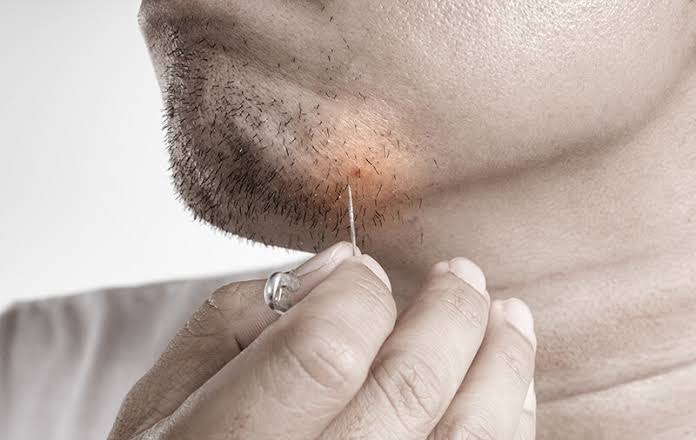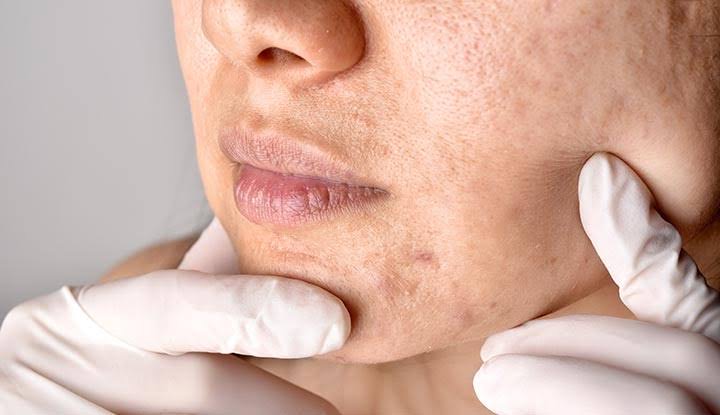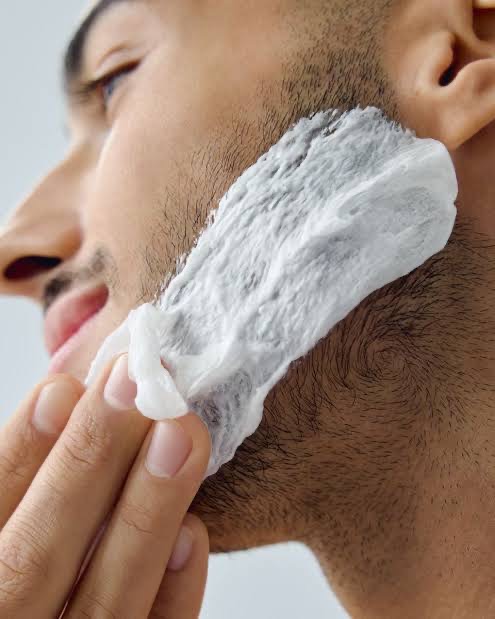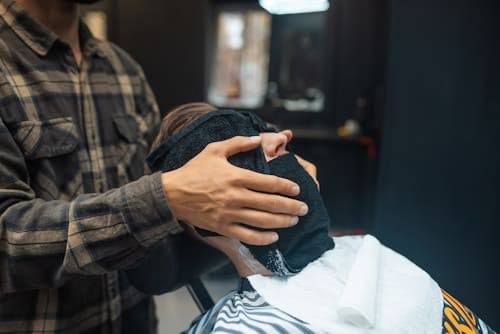Aftershave bumps, also known as razor bumps or pseudofolliculitis barbae, are a common skin condition that occurs after shaving. They appear as small, irritated bumps on the skin, often causing redness, discomfort, and even itching. These bumps are most common in areas with coarse or curly hair, such as the face, neck, or legs. Understanding their causes, how to prevent them, and the best ways to treat them can help you achieve smoother, healthier skin.
What Causes Aftershave Bumps?
Aftershave bumps occur when shaved hairs grow back into the skin instead of outward. This leads to inflammation, irritation, and sometimes infection. The main causes include:
1. Ingrown Hairs

•Coarse or curly hair is more likely to curl back into the skin after shaving.
2. Shaving Techniques
•Shaving too closely, using a dull razor, or shaving against the grain increases the risk of irritation.
•Sensitive skin may react to shaving products or the friction caused by shaving.
4. Clogged Pores

• Dead skin cells, oil, and bacteria can block hair follicles, making it harder for hair to grow outward.
Preventing Aftershave Bumps
Prevention is the best strategy for dealing with aftershave bumps. Here are some tips to reduce your chances of developing them:
1. Prepare Your Skin
– Wash your skin with warm water and a gentle cleanser to soften hair and open pores.
– Use a shaving gel or cream to create a protective barrier and reduce friction.
2. Use the Right Tools
– Choose a sharp, clean razor to prevent tugging and irritation.
– Consider an electric razor or a single-blade razor, which are less likely to shave too closely.
3. Shave Properly
– Shave in the direction of hair growth to minimize irritation.
– Use light pressure and avoid going over the same area repeatedly.
– Use a gentle exfoliator to remove dead skin cells and prevent clogged pores.
– Avoid over-exfoliating, as this can irritate the skin.
5. Moisturize After Shaving

– Apply a soothing, alcohol-free moisturizer or aftershave balm to hydrate your skin and reduce irritation.
6. Avoid Tight Clothing
– In areas like the legs or neck, tight clothing can worsen friction and irritation after shaving.
Treating Aftershave Bumps
If you already have aftershave bumps, these treatments can help soothe your skin and speed up healing:
1. Warm Compress

•Apply a warm, damp cloth to the affected area to reduce inflammation and help the hair grow outward.
2. Topical Treatments
– Use products containing salicylic acid, glycolic acid, or benzoyl peroxide to exfoliate the skin and reduce redness.
– Aloe vera or tea tree oil can help soothe irritated skin and reduce swelling.
3. Avoid Shaving
•Give your skin a break to allow the bumps to heal.
4. Don’t Pick or Scratch
•Picking at the bumps can lead to scarring or infection.
5. Over-the-Counter Hydrocortisone Cream
•Apply a small amount to reduce redness and swelling, but use sparingly to avoid skin thinning.
6. Professional Treatments
– For severe or recurring razor bumps, consider consulting a dermatologist for prescription creams or laser hair removal.
When to See a Doctor
Seek medical advice if:
– Bumps become infected (red, swollen, or filled with pus).
– The condition persists despite home remedies.
– Scarring or discoloration develops.
Alternative Hair Removal Methods
If shaving consistently causes aftershave bumps, consider these alternatives:
1. Depilatory Creams
• Chemical creams dissolve hair at the skin’s surface without the need for shaving.
2. Waxing or Sugaring
•Removes hair from the root, reducing the likelihood of ingrown hairs.
3. Laser Hair Removal
• Provides a long-term solution by reducing hair growth over time.
Conclusion
Aftershave bumps can be uncomfortable and frustrating, but with proper care and preventive measures, you can minimize their occurrence. Preparing your skin, using the right shaving techniques, and adopting a consistent post-shaving routine can help maintain smooth, irritation-free skin. If the problem persists, exploring alternative hair removal methods or consulting a dermatologist can provide effective, long-term solutions.